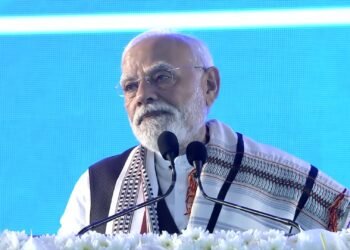Manipur’s Kuki and Naga communities have united against the government’s plan to construct fencing along the Indo-Myanmar border, citing threats to their cultural and economic ties. Tribal leaders argue that the initiative, along with the removal of the Free Movement Regime (FMR), undermines indigenous rights and disrupts cross-border relationships.
By PC Bureau
A fresh layer of tension has emerged in Manipur’s ongoing unrest, with the Kuki and Naga communities uniting in opposition to the proposed fencing along the Indo-Myanmar border and the abolition of the Free Movement Regime (FMR). While the central and state governments stand firm on the initiative as a joint commitment to bolster security, tribal groups are voicing fierce resistance, viewing the project as an existential threat to their heritage and autonomy.
The Kuki-Zo Council has unequivocally condemned the construction of border fencing in the Tengnoupal district, labeling it a violation of international law and a direct affront to the indigenous communities living along the border. In a strongly worded statement, the Council criticized the central government’s actions, accusing them of ignoring the socio-economic and cultural ties that have long defined the region.
Chief Minister N. Biren Singh and Home Ministry officials have frequently attributed Manipur’s prolonged crisis to issues like illegal migration and drug trafficking from Myanmar. However, tribal leaders argue that fencing the border disregards their unique cultural and economic realities. The Kuki-Zo Council has called on local authorities and Civil Society Organizations (CSOs) to rally against the project, warning that the initiative could irreparably harm the region’s indigenous populations.
Echoing similar sentiments, the Naga People’s Front (NPF), a key partner in the N. Biren Singh-led coalition government, has also opposed the fencing and the termination of the FMR. On Sunday, the NPF’s 43-Phungyar AC Unit staged a protest against what it described as a “divisive and oppressive” move.
“Erecting a fence along the Indo-Myanmar border would be akin to building a Berlin Wall,” the NPF declared, decrying the plan as a deliberate effort to sever ties between Naga communities on either side of the international boundary. The protest highlighted the historical wounds inflicted by colonial-era divisions, arguing that the proposed measures would deepen the rift by disrupting cultural, economic, and social connections that bind the Nagas across borders.
Placards and banners displayed during the demonstration bore messages of defiance, calling the government’s actions “diabolic” and “insensitive” to the deep-seated relationships among border communities. The NPF also warned that the removal of the FMR, which has long facilitated free movement across the border, would deal a further blow to the collective identity of indigenous groups.
Both the Kuki-Zo Council and the NPF have reaffirmed their commitment to resisting the fencing initiative, pledging to stand united in defense of their communities. With tribal bodies from Nagaland and Mizoram also expressing solidarity, the government now faces mounting pressure to reconsider its approach to border security in these sensitive regions.
As the standoff escalates, the future of Manipur’s border communities hangs in the balance, with many fearing that the decisions made now could reshape their cultural and socio-economic landscape for generations to come.












